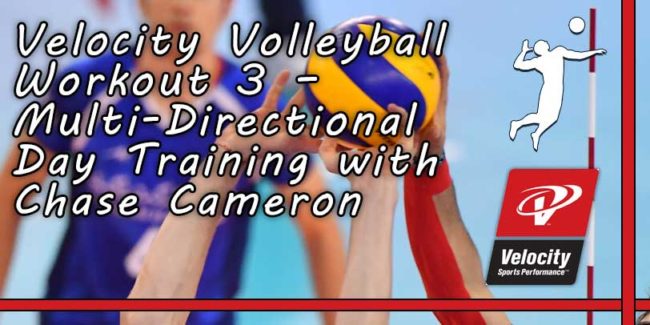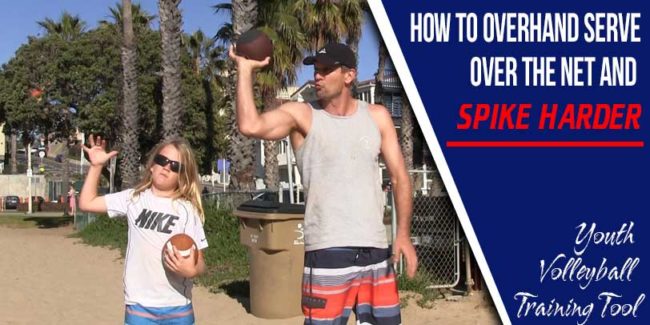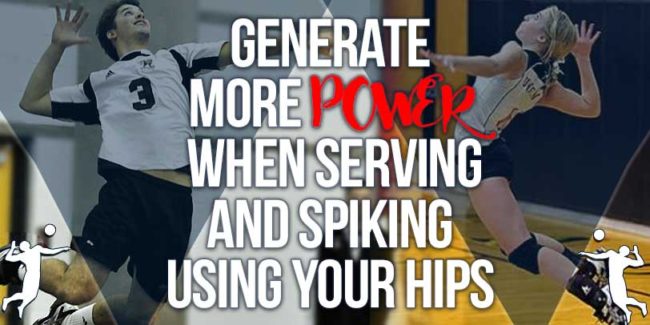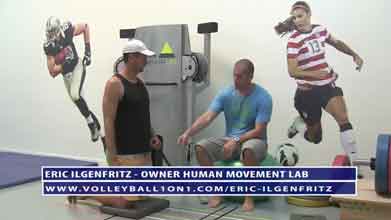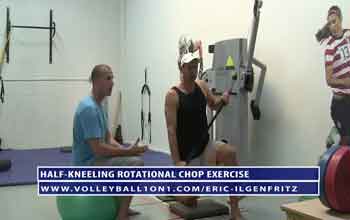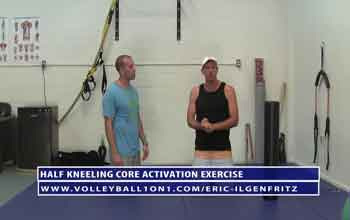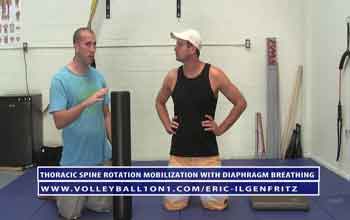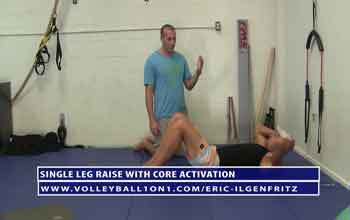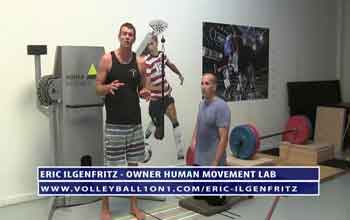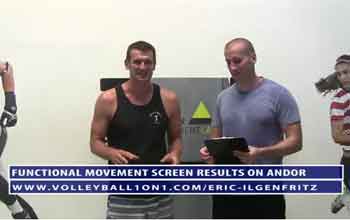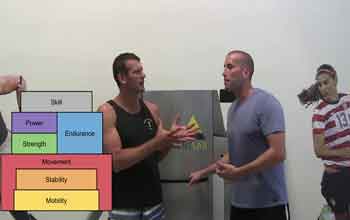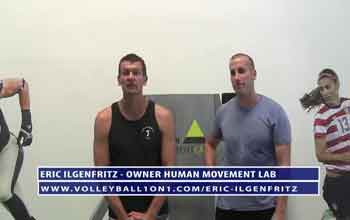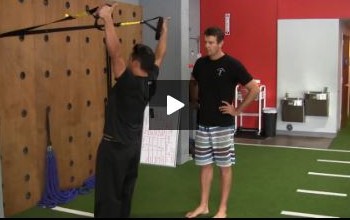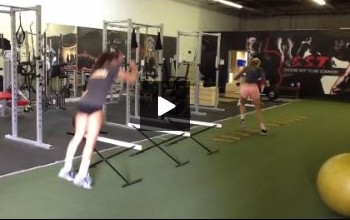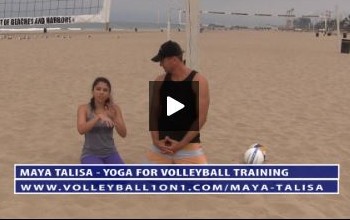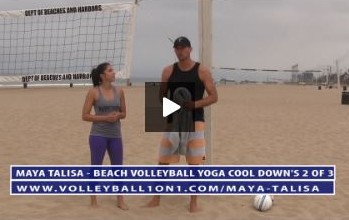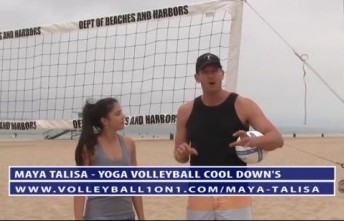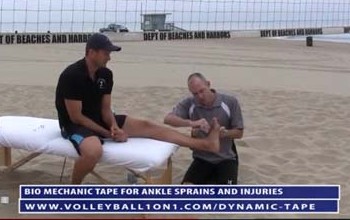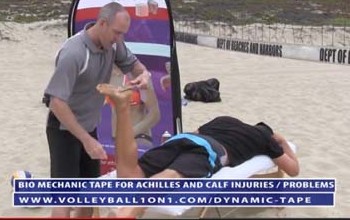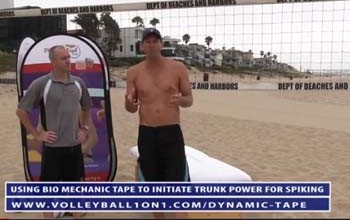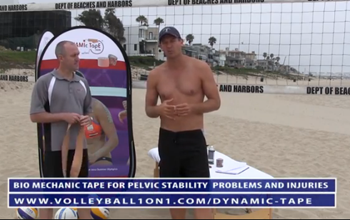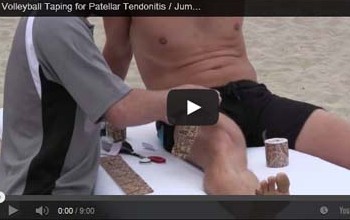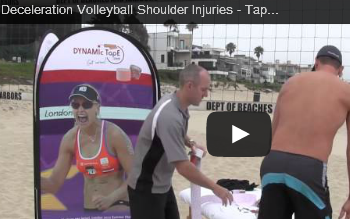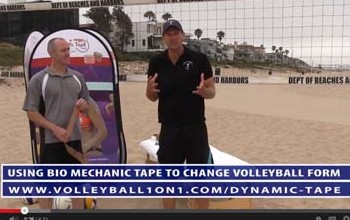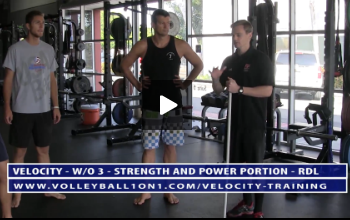Volleyball injuries are common in a sport with so much action. Here we provide information and resources on knee, back, shoulder, ankle, finger, shin injuries including tips for diagnoses, treatment and avoidance. This area also contains a number of videos on injury prevention.
This series of 14 videos features a Multi-Directional Workout filmed at Velocity Newport Mesa with Sports Performance Coach Chase Cameron. This is the third of 3 workouts filmed at Velocity Sports Performance. The other workouts were a Linear Training Day and a Jump / Landing Day.
This new volleyball training tool will help young players by helping them learn “How to Overhand Serve” over the net and spike with more power. In this video I demonstrate with my 9 year old son Thor (Filmed 03/17) how the Passback football can help you learn to serve and spike with more power. Thor…
ARE YOU LOOKING TO GENERATE MORE POWER FROM YOUR HIPS, CORE AND SHOULDER WHEN SERVING AND SPIKING? The Passback Football – Create a simple, repeatable & powerful Volleyball Armswing for Serving or Spiking. For Younger Players this tool will help you or your players serve overhand over the net! The Passback is a great training…
In this article I will review what I have learned working with some of the best volleyball trainers in the world. As I mentioned last week I turn 40 in month and a half and I am in the best shape I have been in 10 years.
So I turn 40 in a few months and I can honestly say I am in the best shape I have been in 10 years and playing some of my best beach volleyball ever. This is no accident but rather the result of hard work, research and finding experts in the fields of volleyball training, nutrition and injury prevention. Today I am going to share how you can do this yourself or help your player accomplish their own similar goals!
As you get older the toughest part is how to recover faster. The science and nutrition behind recovery is light years ahead of what was happening just 15 years ago for me personally while attending UCLA. Here is a list of my personal tips for recovery:
The half-kneeling rotational cross-body lift exercise is a great FMS corrective exercise that works on core & hip stability and left-to-right symmetry.
In volleyball rotational stability is critical for many of the volleyball skills. By going into the half-kneeling position we’re taking the legs out of the equation and putting a lot more work into the hips and trunk (Core).
This is an upper body chop PNF pattern that helps develop trunk and lower body stability, upper body strength and rotary mobility executed from a half kneeling stance. In volleyball rotational stability is critical for many of the volleyball skills like spiking yet too few athletes really put attention into this important element of volleyball training and the result is often volleyball injuries.
The Half-Kneeling Core Activation Exercise is great warm up, cool down or even core exercise to add to any volleyball training workout to help build your core and make sure it fires correctly.
One of the fastest ways to fix nagging lower-back, shoulder or neck problems is to improve mid-back mobility with targeted thoracic spine exercises. The thoracic spine rotation mobilization with diaphragm breathing volleyball exercise is one of the best exercises older players can do to reduce back problems.
Single leg raises with core activation is a great FMS volleyball training exercise that will reduce many common volleyball injuries including back injuries while also helping your bodies muscular system fire more effectively.
Core exercises are critical to increasing performance and avoiding injuries when playing volleyball. Chopping exercises improve core rotation strength which is critical to more effectively transfer force between your upper and lower body, and ultimately spike harder, jump higher and move faster. Building core rotational strength in the critical core muscles stabilizes your spine, allowing you to be more balanced as you move on the court.
In this video Volleyball1on1 Owner Andor Gyulai is given his results from a Functional Movement Screen (FMS) performed by Eric Ilgenfritz. The Functional Movement Screen is a ranking and grading system that documents movement patterns that are key to normal function.
This video is an introduction to the new science behind musculoskeletal systems training for volleyball. The video features Eric Ilgenfritz of Human Movement Lab as he explains the concepts behind Functional Movement Systems and the Functional Movement Screen. In the video Eric explains the sports / volleyball training hierarchy of Mobility before stability, stability before strength, strength before power, and power before volleyball specific skill.
This video is an introduction to functional movement training with Eric Ilgenfritz on Volleyball1on1.com. Andor Gyulai the owner of Volleyball1on1 in his quest to play on the FIVB sought out experts to help him get stronger physically as well as avoid injury. Eric and his training systems were an important part of Andor’s training especially as it relates to volleyball injuries. By following Eric’s advice Andor within just 2 months was able to sort out his lower back, knee and shoulder pain injuries.
So I have been training and playing hard now for months in South Africa with little to no shoulder pain. I attribute this to some minor changes I made in my arm swing as well as this great exercise I picked up from the volleyball trainers at Velocity Fitness. Y-T-W is a great volleyball shoulder exercise for posterior activation and scapular stabilizing.
Reid’s Workouts is producing some of the most physical and dynamic volleyball players. In this four part video series you will get access to a full workout that Reid Hall took a small group of 16 and 17 year old female volleyball players through. The four part series will cover the following:
This is the third video of 3 for our Beach Volleyball Yoga Cool Downs. The instructor is Maya Talisa, Yoga Volleyball Expert. Maya has been featured in Volleyball Magazine and has worked with players in NCAA, AVP and FIVB. This video features multiple exercises and will target your forearms, your wrist, your full back, you ankles, calves and feet.
This is video 2 of 3 for our Beach Volleyball Yoga Cool Down Series. This video features volleyball yoga expert Maya Talisa. Maya has been featured in Volleyball Magazine and has worked with players in NCAA, AVP and FIVB. This video features multiple exercises and will target your lower back, shoulders, chest and hamstrings.
This beach volleyball yoga cool down video features multiple exercises and will target your chest, upper back, shoulders, glutes and your hips. This video is brought to you by Maya Talisa who has been featured in Volleyball Magazine.
In this video we share a new volleyball ankle taping technique that is good for recovering ankle sprains, light sprains and allowing good movement while still protecting the ankle injury or problem. This is different than traditional taping techniques, think of it more like something a dancer would use to help support and ankle sprain rather than a technique to lock up the ankle from further injury.
This video features taping techniques for achilles and calf injuries and problems. This is a new type of tape on the market that absorbs and creates load thus doing different things than tradition athletic tape of kinesio tape.
This video offers new ideas and ways on helping players create trunk rotation volleyball power using bio-mchanic tape by Dynamic Tape. This video features a volleyball taping volleyball players muscle proprioceptive so as once the tape is removed the player is more conscious of using their trunk and hips to generate power.
This video features volleyball taping techniques for sacroiliac joint And pelvic stability. This is not a common volleyball injury no less one that does occur from time to time. This taping technique can be used for a wide range of injuries related to movement and spinal stability and therefore we felt it was worth filming and adding to Volleyball1on1.com.
As all players know patellar tendonitis is a common volleyball injury that affects players of all levels. In this video we show a new taping technique using Dynamic Bio Mechanic Tape. This is a new tape on the market that offers a new way to address common volleyball injuries. This taping technique is pretty simple and can be performed by a player, parent, coach or trainer.
One of the most common injuries in volleyball is back injuries. In this video Andor Gyulai and Ryan Kendrick discuss a new tape and taping technique for common back injuries. This tape and technique is new on the market and features bio mechanic tape by Dynamic Tape.
In this video Andor Gyulai and Ryan Kendrick of Dynamic Tape go over a easy taping technique to deal with deceleration volleyball shoulder injuries. This can be done by parents, coaches and trainers and will significantly help with deceleration shoulder problems.
As most good coaches know using your trunk to initiate your volleyball spiking power is critical to avoiding injury. In this video Andor Gyulai (Owner – Volleyball1on1.com) and Ryan Kendrick (Owner – Dynamic Tape) discuss how Dynamic Bio-Mechanic tape can be used to fix and improve volleyball spiking technique.
In this video we offer a easy taping technique for reducing load as a result of spiking a volleyball. This technique is so easy parents, partners and coaches can do it without to much difficulty. For the tape we are using Bionic Tape by Dynamic Tape. This tape is different than KTape / Kinesio Tape and offers a new tool for volleyball players, coaches and trainers to deal with traditional volleyball injuries.
Hi, I’m Andor Gyulai – Owner of Volleyball1on1.com, I created this video to express some frustrations I have in the new ways volleyball spiking is being taught by people who have little experience playing the game, especially beach volleyball as well as minimal experience coaching youth successfully. I made this video to bring some new points to the conversation and hopefully give some confidence to experience coaches who are questioning what they are teaching and if it is correct in their coaching philosophies.
This series of 16 videos features a Jump / Landing Workout filmed at Velocity Newport Mesa with Sports Performance Coach Chase Cameron. Chase and the rest of the Velocity team train allot of top volleyball players including Pro AVP players like Ed Ratledge. This is the second of three workouts we filmed at Velocity Sports Performance.
This video contains two of our favorite exercises for volleyball, RDL’s (Romanian Dead lift) and anti rotation core stability training. What we like about RDL is that it is one of the best exercises to build hamstrings, one of the most critical muscles for jumping and volleyball. As for the core anti rotation stability exercise, we love this exercise as what we hear from many of our top athletes is that this is one of the most important factors for injury prevention when spiking.

